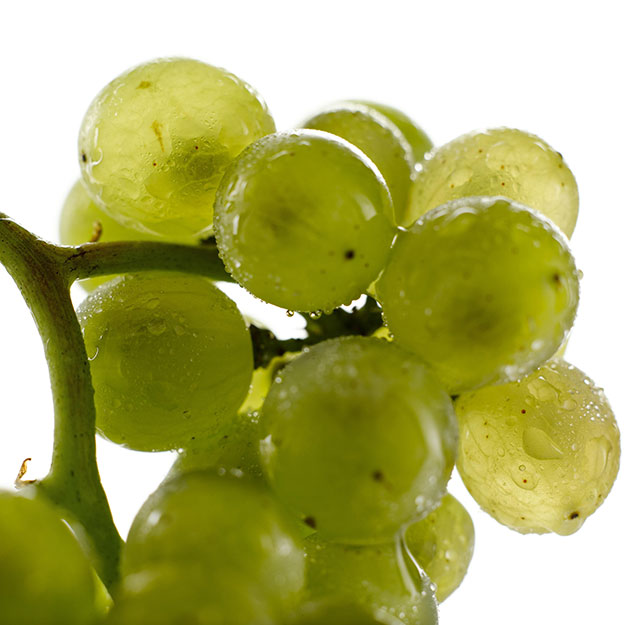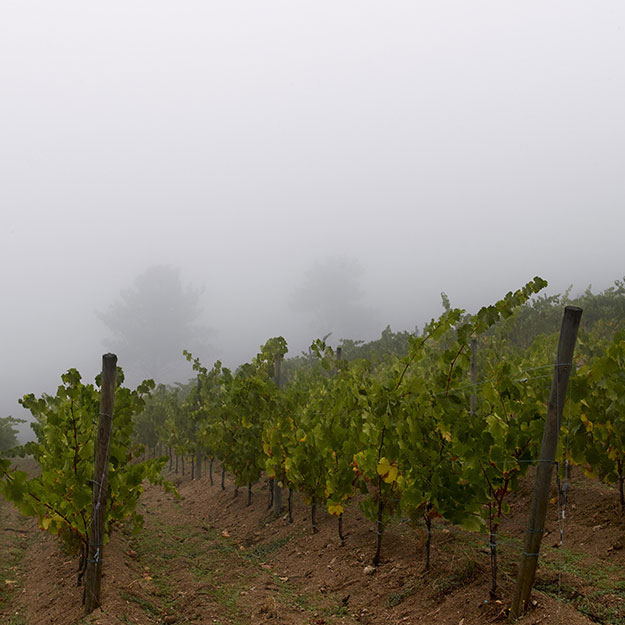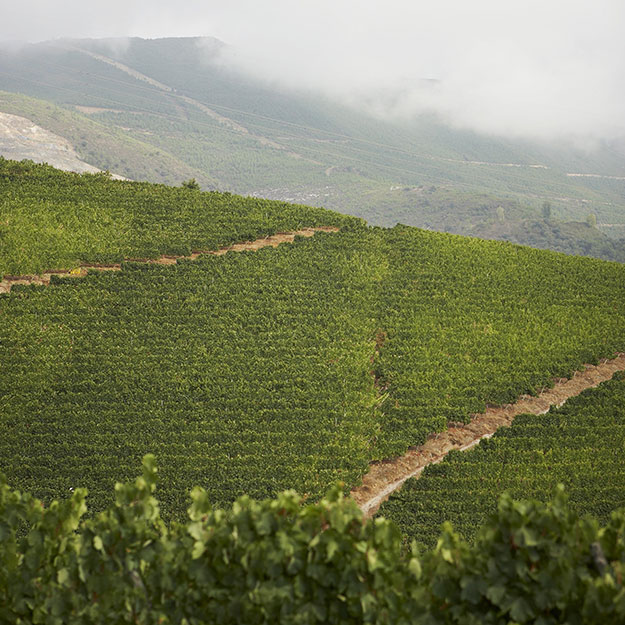.png.transform/rendition-xs/image_image%20(1).png)
Waiting for Godello
“Keep an eye out for Godello.” was what the acclaimed Dutch wine writer Hubrecht Duijker intimated to me in the 1980s. Of all the wonders in Spain's treasure trove, he had singled out an unknown white grape from Galicia. I remembered him when I had my own first acquaintance with Godello. It was a bottle of Guitian, a fine, tightly structured yet aromatically underperforming young white wine. But it certainly raised my interest. Time had come to investigate and see what had become of Duijker's expectations.

Text: Harold Heckle/@ICEX
Godello had been headed for extinction, because Phylloxera bore down hard on the northwest. To restock the area's devastated vineyards, vast plantations of heavy-cropping Palomino further squeezed what few Godello vines had survived.
While famous in Andalusia for producing sherry, up in Galicia Palomino tends to make dumb, lifeless wines best suited to quantity rather than quality. So eventually some wise heads in the wine industry realized that simple, cheap wine was not a good way to foment employment, the sector had to be revolutionized. Impressed with stainless steel vinification of the German Kabinett wine and its corresponding commercial success, in the 1970s, they launched the “Revival” project and recovered Godello from the brink of extinction.
Back from the brink
At DO Valdeorras they explain that the project researched the most appropriate rootstocks and training methods and addressed the grape’s tendency to mature very rapidly due to serious sunshine exposure in autumn. Apparently hillside plantations had given excellent wines from way back in antiquity, so they also looked into what soils and locations could be best. Luckily Galicia happens to have some of the finest slate in Europe. But in all not more than 1,000 square meters (1,200 sq. yards) of vineyard had survived. The surviving Godello vines were around 60 years old, grafted onto a hybrid of Vitis vinifera and rupestris. Clonal selection among these not more than 200 original stocks has been subsequently improved, yet without narrowing it too tightly to preserve polyclonal vineyards.
These pioneers were also some of the first in Spain to use stainless steel, but confessedly the first new Godello’s were not consistent. The lack of immediate varietal aroma slowed its appeal on the international market. Yet thanks to careful work in vineyards and total control of rising maturity at harvest, Godello wines now show an attractive nose and a fleshy, rounded palate. The good thing about Godello is that it allows terroir to shine through, but possible odd smells need to be avoided. This is why a selection table at harvest time is essential.
At Bodegas Godeval, housed in the beautifully restored 13th c. San Miguel de Xagoaza Monastery, grapes are de-stalked, cold fermented with inoculated yeasts at 18ºC for around 15 days. The feature Godeval treasures most is the mineral quality drawn from slate soils. They produce some 150,000 bottles of 100% Godello wines. Their Godeval is brilliant yellow with an herbal, lemony nose, a quite full palate and good structure. The Godeval Cepas Vellas is from old vines on the slatey slopes of the Sil river.
A White as Serious as the Best Reds

The region’s pride was greatly boosted when Rafael Palacios (from the famed Palacios wine dynasty), settled here with his family to start a new winery. He planted his vines on ancient stone terraces in Valdagua, at an altitude of 750 meters (2,460 feet), where he plans to built his new winery. All grapes are de-stalked, pressed, chilled and 80% is fermented in oak foudres and barrels and the remainder in stainless steel, although the goal is to only use wood. Then wine is left on its lees undergoing weekly battonage to make for a fuller, more glyceric palate.
Palacios’ wines are already written up widely. His Louro Do Bolo is light yellow, with a restrained perfume and a very polished palate. His top wine is As Sortes, made from older terrace-grown vines in Val do Bibei and barrel aged for six months. Bright yellow, on the palate it is all contained youth, lemony and full in the mouth and promises to become even more tickling while gaining bottle age. By now it is clear that the Godello positively benefits from aging.
Terroir Shines Through
This becomes obvious at a number of wineries like Bodegas Val de Sil with some amazing slate vineyards at over 500 meters above sea level. The idea behind their Montenovo is to express terroir at affordable prices. Yellow, with green stalky nuances on the nose, it opens up to an impressively balanced palate. Val de Sil Sobre Lías is pure yellow with a lees added complexity and a rounded palate. Pezas da Portela is rich yellow with a glorious nose echoing wood mingled with fruit. It comes from old vines at 11 different plots all individually vinified. Pedrouzos (only magnums) comes from a unique broken slate vineyard. It is rich yellow, with a fabulous nose infused with pure terroir-mineral hints and has a huge length.
A Coroa, a lovingly restored 18th century winery, with an excellent south-southeast exposure and an inclination of minimum 15%, at present produces different Godello’s, which recently got over 90 points on Stephen Tanzer’s scale. A Coroa 2012 has a daring luminous lemony color, a flowery nose and a well structured palate. It develops well on the bottle. Lías 2010 won gold at Les Citadells du Vin contest and their latest wine, 200 cestos, is a limited edition from a single old vine granitic vineyard at over 600 m.
Adega O Casal, in Rubiá, is a winery at 550m. with an orientation that allows for perfect maturation. Most of their vines are over thirty years old. They put the aromatic impact of their wines down to orientation and age, no wonder then that their Casal Novo packs peaches and tropical fruit.
Versatility Shows

Even though the proportion of Godello grown in the adjacent DO Bierzo area is rather small (the star here is the red Mencía), it has increasingly been attracting attention and loyalty among producers and consumers. At Bodegas y Viñedos Bergidenses they harvest at two moments, usually three days apart, to get the best Godello blend, like their Viña Garnelo, which also carries some old vine Doña Blanca and Malvasia. The blend works great.
The Luna Beberide winery has slowly been acquiring old Godello vineyards, to complement their collection of reds. Their 100% Godello LB scored 90 on Tanzer’s list and is marketing very well. On the nose it is reminiscent of green apples, a typical characteristic of Godello.
Prada a Tope, based in the impressively restored Palacio de Canedo. only produces certified organic wines. The 100% Godello they produce is very lightly filtered and delivers a wild, joyous aromatic experience. But the Godello here shares stardom with the Mencía so it comes as no surprise that they also produce a great rosé “with the soul of the Godello and the body of the Mencía.”
At Bodegas y Viñedos Gancedo in Quilos they harvest with infinite care from 63 individual plots. Both their whites wines, Capricho and Herencia del Capricho (fermented and raised on the lees) are made of Godello with a touch of old-vine Doña Blanca.
From Burgundian Monks to Biodynamic Ideals
The world woke up to the potential of slate in Spain with the emergence of the Catalan region of DO Priorat as a producer of world-class wines. Here old vines on ancient slate terraces produced powerful, terroir-driven wines. And Galicia soon followed by restoring the achingly beautiful, antique and extremely steep-sided slate terraces of Ribeira Sacra, drained by three rivers. It received DO status in 1996. Due to the reigning inheritance system it is divided up in tiny, most often under one hectare (2.47 acres) plots.
Adega Pena das Donas is such a one hectare winery overseeing another two. Grapes from very old vines producing tiny bunches are handpicked and transported on mini-rails. Their 100% Godello Almalarga, vinified on its lees, has apple and gooseberry nuances and is surprisingly full bodied and opulent in the mouth.
At Adega Algueira seven of their wines got over 90 Parker points in 2013, among which the100% Godello’s, Escalada (93) as well as Cortezada (91), a blend of Godello, Albariño and Treixedura, where the mineral quality of the slate soils is always very present. And then there is the fragrant un-wooded young white Godello called Brandan (a Celtic warlord).
Dominio do Bibei in Quiroga lies at 550 m., surrounded by old and new vineyards. The winemaking team has great respect for terroir and local varieties and is deeply committed to biodynamic practices like using organic compost, pruning during full moon, gravity driven winemaking and aging in egg-shaped Nomblot tanks. This is clearly also epitomized by the estate’s stark architecture. At present they produce two red and two white wines all under DO Ribeira Sacra. They consider the Godello “beyond doubt, Spain's greatest white grape.” Thus their 100% Godello Lapena is the product of two older low yielding vineyards. Grapes are fermented in 2nd year 600l. French oak barrels, aged for 8 months on the lees, followed by 11 months in concrete tanks. The result is a wine full of sophistication, awarded 93 point on the Parker scale. Their Lapola is a blend of 70% Godello, 20% Albariño and 10% Doña Blanca, slowly fermented in large barrels and gradually aged in barriques, Austrian foudres and concrete tanks. It features a fresh bouquet reminiscent of yellow pit-fruit, as its well-balanced palate with zesty acidity and a huge finish.
Now once you have poured yourself a glass of tinkling and tingling Godello, allow yourself to be carried away by the gorgeous telltale pictures of this winery’s website. No doubt that in the end Duijker was right, Godello certainly is world-class.


